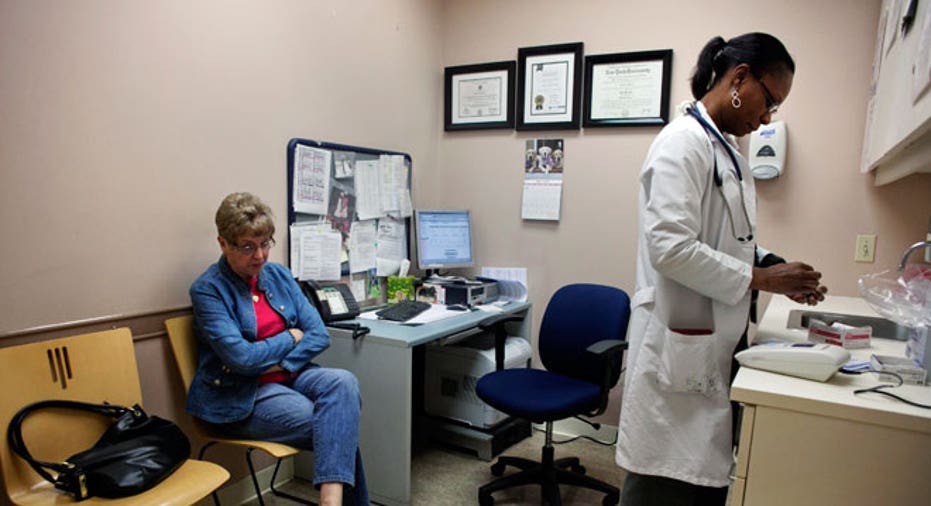Oh Sugar, Sugar! Diabetes and Insurance

'Tis the season for tasty treats, but overindulging could do more than pad your waistline for those at risk for diabetes - and that's a lot of people.
Consider these statistics:
- About 26 million American adults have diabetes already, according to the Centers for Disease Control and Prevention (CDC).
- About 79 million adults have pre-diabetes, which means their blood sugar levels are abnormally high and are at risk for developing the disease, says the CDC.
- More than half the population may get diabetes or pre-diabetes by 2020, according to a UnitedHealth Group analysis.
Heart disease and stroke are the leading causes of death and disability among people with Type 2 diabetes. At least 65 percent of people with diabetes die from some form of heart disease or stroke, according to the American Heart Association.
"The holiday season and winter celebrations bring with them special challenges related to managing busy schedules, holiday stress and temptations of rich food and drink," says Deneen Vojta, a senior vice president at UnitedHealth and chief clinical officer of its Diabetes Prevention and Control Alliance.
Individuals living in colder climates also might find it more challenging to get regular exercise, which could lead to weight gain and a slowdown in metabolism. Both can lead to health problems for those living with diabetes or pre-diabetes, says Vojta.
Health insurance and diabetes
Health-care reform will prevent insurers from denying coverage to anyone with a pre-existing condition, including diabetes. But that doesn't become law until 2014. Insurers currently are able to reject applicants with these conditions or charge much higher premiums for coverage, the American Diabetes Association (ADA) points out in its position paper on health reform. ( See: "Health reform sticks: Now what?")
Until then, the ADA says you can take advantage of Pre-Existing Condition Insurance Plans (PCIP) administered by federal and state governments in every state to help people secure adequate medical protection. Your state may also provide other high-risk insurance plans for people with pre-existing conditions. You can learn more about PCIP and other coverage at the ADA's "health insurance in your state" site.
Life insurance and diabetes
As for life insurance, you may not qualify for an affordable policy if you can't show that your diabetes is being treated and under control. Vojta recommends working with your doctor to manage the illness before applying for a life policy. (See: "Will a health condition kill your life insurance options?")
Type 2 diabetes can be treated by adjustments to diet and exercise, oral medications or insulin therapy, and insurers tend to focus on how well you respond to your treatments over time. To gauge that, insurers typically look at your blood-sugar levels and your hemoglobin A1C count.
Type 1 diabetics, even if they are responding very well to treatments, will most likely be quoted with a “high substandard” policy that has expensive premiums or payments. (See: "Understanding life insurance table ratings.")
The ADA also advises finding a life insurance carrier that uses "clinical underwriting," a process that looks at your total health, not just what health conditions you have, to secure coverage and get a reasonable rate.
Fighting diabetes during the holidays and beyond
Vojta recommends you take the following steps to control diabetes and pre-diabetes:
1. Know your family medical history
2. Get regular exercise
3. Eat fruits and vegetables, lean meats and fish
4. Don't overdo the carbohydrates, especially starches, sugar and fiber
5. Choose whole-grain foods over processed grain products
6. Cut back on high-calorie snack foods and sugar-sweetened drinks
7. Drink lots of water
8. See your doctor regularly
9. Brush your teeth daily with toothpaste that fights bacteria and gingivitis.
10. Regularly test your blood sugar
Signs you may be at risk for diabetes
It's always prudent to be aware of warning signs for diabetes, says Vojta, especially since it's estimated that there 7 million people who are pre-diabetic and don't realize it. Here are symptoms to watch:
1. Unquenchable thirst
2. Dry mouth
3. Increased hunger
4. Blurry vision
5. Feeling tired or fatigued
6. Unexplained weight loss
7. Frequent urination
8. Tingling or numbness in hands, legs and feet
9. Frequent infections or cuts and bruises that take a long time to heel
10. Red, swollen and/or bleeding gums when you brush or floss
The original article can be found at Insurance.com:Oh sugar, sugar! Diabetes and insurance